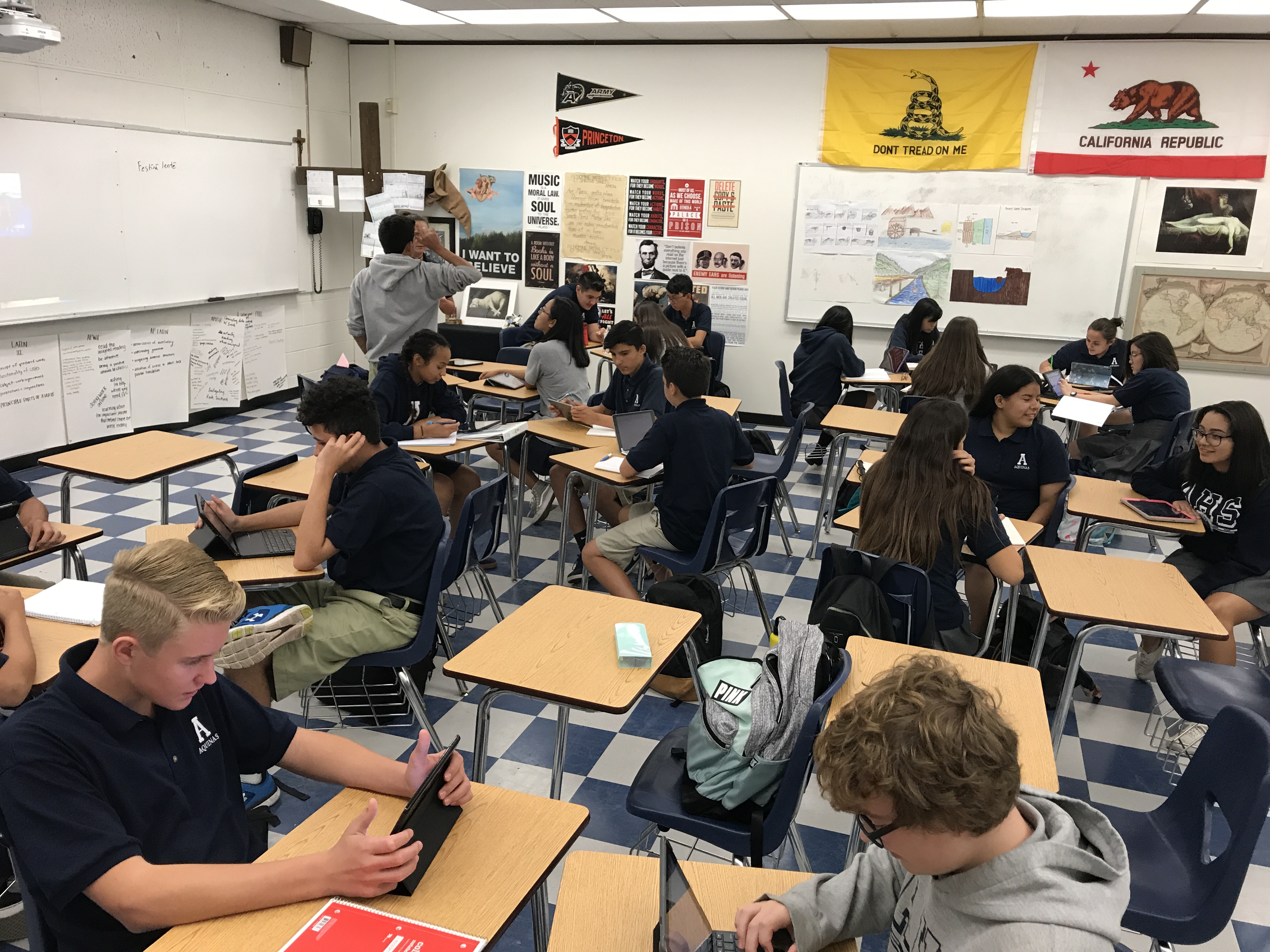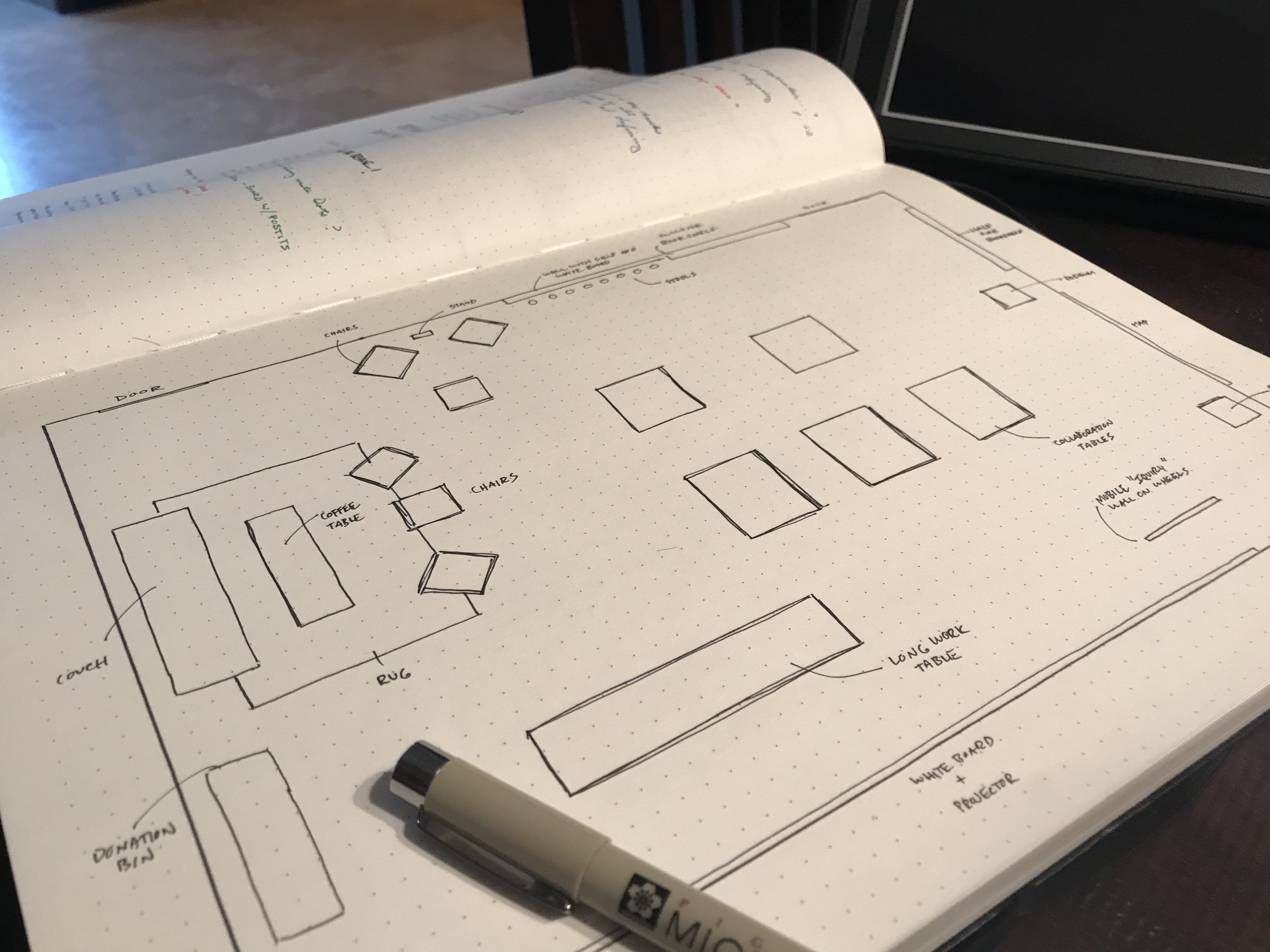(Re)Creating A Flexible Learning Classroom Environment
 Starting out as a High School teacher, I went right to where I was comfortable. I had spent years delivering speeches and lectures. I knew how to lecture well. I created elaborate supportive keynotes rich in media, and lectured every day, in every class, for years. My classroom reflected it. It was designed like a lecture hall, rows of desks facing forward with students staring at my podium and projector. I positioned these students for an information download, and it didn’t matter whom they sat next to or what their individual learning needs were, the class was about me and my content. It wasn’t differentiated. It wasn’t personalized. There were no pre-assessments for prior knowledge. They needed to memorize the facts I gave them and regurgitate them on a multiple choice test. My entire educational approach, from instruction to physical layout, was geared toward educational mass production.
Starting out as a High School teacher, I went right to where I was comfortable. I had spent years delivering speeches and lectures. I knew how to lecture well. I created elaborate supportive keynotes rich in media, and lectured every day, in every class, for years. My classroom reflected it. It was designed like a lecture hall, rows of desks facing forward with students staring at my podium and projector. I positioned these students for an information download, and it didn’t matter whom they sat next to or what their individual learning needs were, the class was about me and my content. It wasn’t differentiated. It wasn’t personalized. There were no pre-assessments for prior knowledge. They needed to memorize the facts I gave them and regurgitate them on a multiple choice test. My entire educational approach, from instruction to physical layout, was geared toward educational mass production.
Two shifts occurred. I began to recognize the problem in my design. I didn’t have time for analysis, primary sources, writing, thoughtful projects, and other cognitive building activities. Who cares if they knew random facts if they didn’t leave my class as more critical and creative thinkers? Indeed, according to recent studies in how people learn, students are best served by developing intellectual tools and strategies in acquiring knowledge that allows them to think more productively (Bransford, Brow, & Cocking, 2000, p. 5).
At the same time, my school launched an iPad1:1 program. I suddenly had classes full of students with powerful technology, and they were only using it to take notes from my lectures (or take photos of my lecture slides—which drove me crazy).

Students collaborating in small groups using their iPad to problem-solve a historical “compare and contrast” dilemma (2017)
It was time for a shift. I killed lecture. I made space for all the analytical and cognitive thinking, projects, and collaborative problem-solving. However, my physical space told otherwise. It showed that little had changed. All the desks were still arranged facing forward. Students would break into collaborative groups by moving their chairs, but I continued to maintain my class layout reinforced by my old pedagogical philosophy. Even by entering the space, I was engraining an implicit and unspoken statement to my students about the “normal” way of education in which classes face “forward” toward the Sage on the Stage.
Indeed, the kind of learning needed requires a change in the physical layout—a different type of space for community learning that would allow students to engage in “discourse practices” that would enable learners to construct knowledge together (O’Donnel, 2012, p. 63). Moreover, Warner and Palmer observe that learner-centered flexible classes need to provide students with choices in the “pace, place, and mode” of their learning (Wanner and Palmer, 2015, p. 356). My classroom is not currently designed for this better way of learning.
Local coffee shop culture has inspired me. These spaces are a blend of community, collaboration, study, and discussion. From early morning studying to “open mic” and “guest speaker” nights, I want my class to be more like a coffee shop and less like a lecture hall.
To that end, I have sketched out and designed (using the Sketchup software) a potential layout for the physical class in which I want to teach. Worthy of note is both the lack of a teacher desk and a missing “front” of the classroom. While the projector will remain on the North wall opposite the doors, this is a complete transformation of the space. I designed this class for one purpose: flexibility. This space will encourage collaboration and discussion. The work tables would enable productive and collaborative work. The chairs and coffee tables promote dialogue, though perhaps these chairs ought to have swinging small desk arms that can be pulled up for more flexible space. Whiteboards and bar stools on the south wall near the doors would allow students to discuss and brainstorm. I can see myself floating from collaborative group to group, working with each according to need.


 This classroom could be amazing.
This classroom could be amazing.
While not all of these transformations need to occur at once, the first step will be to “normalize” the rearranged desks into small clumps. Unless I acquire significant funding and volunteer work from the local community, parents, and friends, this project will take some time to realize. I can remove small portions of the class, replacing clumps of desks for sets of chairs and tables as funds become available. I estimate that the transformation will take several thousand dollars, a price tag far to steep for a small non-profit private school serving a low-income city like San Bernardino. I am looking into flexible seating grants and crowd-funding sites that will help bring this transformation alive.
I have created an AdoptAClassroom campaign for funding this project. If you have extra resources, please consider donating or if you are a teacher and know of a grant for which I can apply, please leave me a message below.
If you have any other suggestions or ideas, please share.
References
Bransford, J.D., Brown, A.L., & Cocking, R.R. (2000). How people learn: Brain, mind, experience and school. National Academies Press. Retrieved from http://www.nap.edu/openbook.php?isbn=0309070368.
O’Donnell, A. (2012). Constructivism. In APA Educational Psychology Handbook: Vol. 1. Theories, Constructs, and Critical Issues. K. R. Harris, S. Graham, and T. Urdan (Editors-in-Chief). Washington, DC: American Psychological Association. DOI: 10.1037/13273-003.
Wanner, T., & Palmer, E. (2015). Personalising learning: exploring student and teacher perceptions about flexible learning and assessment in a flipped university course. Computers and Education 88, 354-369.

